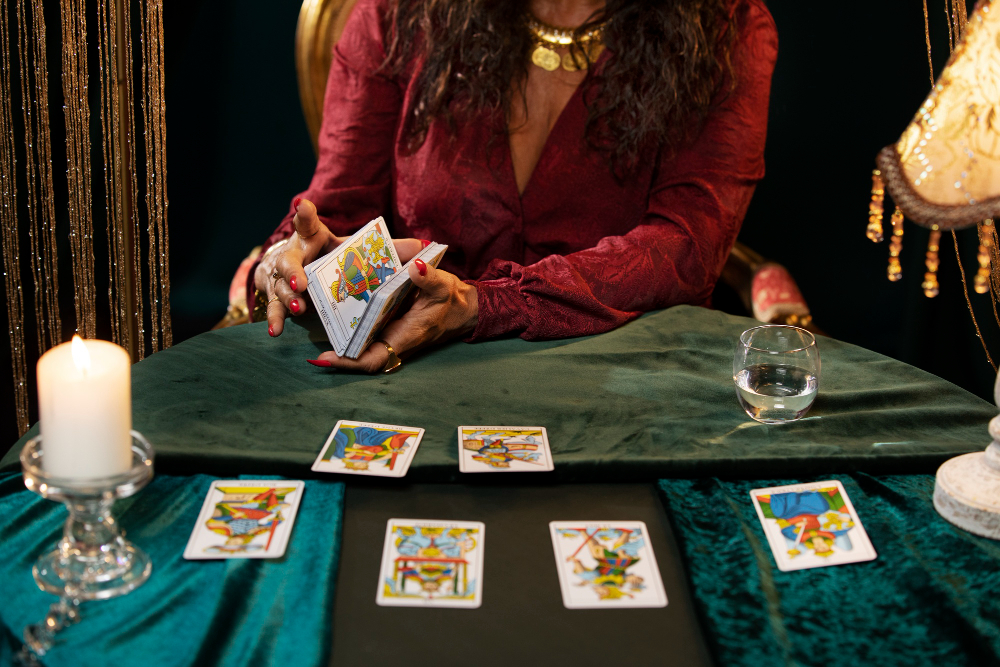Tarot cards have fascinated people for centuries, offering insights and guidance through their rich symbolism and deep meanings. Whether you’re a seasoned reader or just beginning to explore tarot, understanding the various types of tarot cards and their meanings can enhance your practice. In this guide, we’ll delve into the different types of tarot cards, the classes of tarot decks, and provide a helpful overview of card meanings.
What Are the Different Types of Tarot Cards?
Tarot cards come in various types and styles, each with its unique symbolism and historical background. Here’s a breakdown of the most common types:

1. Traditional Tarot Decks
Traditional tarot decks typically consist of 78 cards divided into two main sections:
- Major Arcana: Comprising 22 cards, these represent significant life events or spiritual lessons. Examples include The Fool, The Magician, and The World.
- Minor Arcana: Consisting of 56 cards, these are divided into four suits (Cups, Pentacles, Swords, and Wands), each containing 14 cards (Ace through Ten, plus Page, Knight, Queen, and King).
2. Rider-Waite Tarot Deck
The Rider-Waite Tarot deck, created by Arthur Edward Waite and illustrated by Pamela Colman Smith, is one of the most well-known and widely used tarot decks. It’s known for its detailed imagery and symbolism, making it a popular choice for beginners and experienced readers alike.
3. Themed and Modern Decks
Modern tarot decks often incorporate themes or artistic styles that reflect contemporary interests or cultures. Examples include:
- The Wild Unknown Tarot: Known for its minimalist and nature-inspired artwork.
- The Tarot of the Cat People: Featuring feline imagery and a unique artistic style.
What Are the Classes of Tarot Cards?
Tarot cards are generally categorized into several classes based on their role and significance in a reading. These include:
1. Major Arcana
The Major Arcana cards represent major life events, spiritual lessons, and deep psychological archetypes. Each card has its distinct symbolism and significance. For example:
- The Fool: Represents new beginnings and potential.
- The Tower: Symbolizes sudden change and upheaval.
2. Minor Arcana
The Minor Arcana cards focus on everyday experiences and issues. They are divided into four suits:
- Cups: Associated with emotions and relationships.
- Pentacles: Concerned with material aspects and career.
- Swords: Represent intellect, conflict, and decisions.
- Wands: Linked to creativity, action, and growth.
3. Court Cards
Each suit in the Minor Arcana has four court cards:
- Page: Represents new beginnings and learning.
- Knight: Symbolizes action and ambition.
- Queen: Associated with nurturing and intuition.
- King: Represents authority and mastery.
Tarot Cards Meaning List with Pictures
Understanding the meanings of each tarot card is crucial for accurate readings. Here’s a brief overview of some key cards and their meanings:
- The Magician: Manifestation and resourcefulness.
- The High Priestess: Intuition and mystery.
- The Lovers: Relationships and choices.
- The Sun: Joy, success, and vitality.
Images of these cards can be found in tarot books or online resources for a visual reference.
How Many Types of Tarot Decks Are There?
The number of tarot decks is vast and continually growing, with new decks being created to suit different tastes and themes. Generally, tarot decks can be classified into:
- Traditional Decks: Such as the Rider-Waite and Marseille decks.
- Themed Decks: Including those based on mythology, fantasy, or pop culture.
- Custom Decks: Created by individual artists or practitioners.
Tarot Cards for Beginners with Meanings
For beginners, starting with a well-known deck like the Rider-Waite can be helpful due to its extensive resources and guides available. Here’s a basic guide to get started:
- Learn the Structure: Familiarize yourself with the Major and Minor Arcana, and the suits.
- Practice Reading: Start with simple spreads, like the three-card spread, to practice interpreting card meanings.
- Use Resources: Utilize books, online courses, and guides to deepen your understanding.
Tarot Cards Online: Understanding the Different Types
Online platforms offer a wealth of resources for learning about tarot cards, including virtual decks and educational sites. These can provide interactive ways to explore card meanings and practice readings.
Visit us at https://mysticuniverse.com.au/
Exploring tarot cards offers a journey into a world rich with symbolism and insight. By understanding the different types of decks, the meaning of each card, and how to interpret them, you can enhance your tarot practice and uncover deeper layers of guidance. Whether you’re using traditional decks like the Rider-Waite or exploring new themes, the key is to find a deck that resonates with you and to practice regularly to develop your skills.
